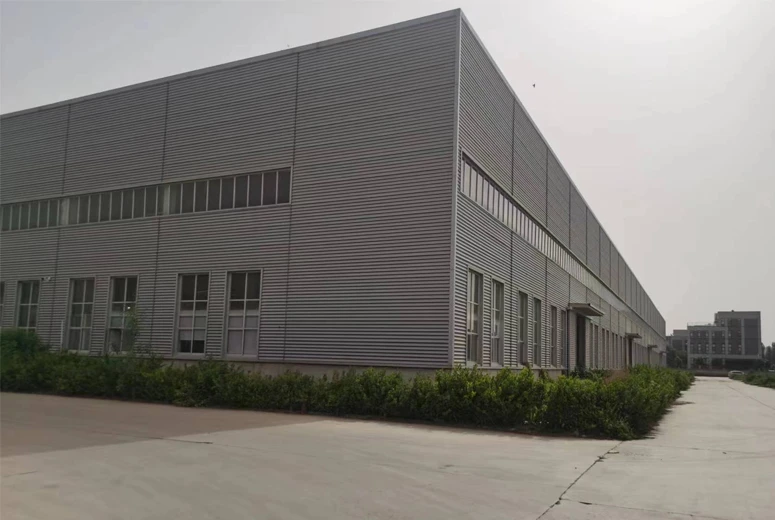Rod Straightening and Cutting Equipment for Precision Metal Fabrication
Rod Straightening and Cutting Machine An Overview
In the manufacturing and construction industries, the need for precision and efficiency is paramount. One piece of equipment that has become indispensable in this regard is the rod straightening and cutting machine. This specialized machinery plays a critical role in processing metal rods, ensuring they are straightened and cut to exact specifications for various applications.
Functionality of Rod Straightening and Cutting Machines
The primary function of a rod straightening and cutting machine is to take raw metal rods, typically made of steel, and prepare them for further use in manufacturing. This process involves two main operations straightening and cutting.
1. Straightening Process Metal rods, when produced, often have slight bends or deformations due to the manufacturing processes they undergo. The straightening component of the machine uses a series of rollers and tensioning devices to straighten these rods. These rollers exert pressure and pull on the metal, gradually aligning it to the desired straightness. This is crucial because deformed rods can lead to structural weaknesses or issues in further processing.
2. Cutting Process Once the rods are straightened, they need to be cut to specific lengths suitable for their intended application. The cutting function can be achieved using various methods, including shearing, sawing, or using a plasma cutter. The machine is equipped with precise measuring tools to ensure accuracy, allowing operators to input the required lengths and produce uniform cuts every time.
Importance in Industries
Rod straightening and cutting machines are prevalent in several industries, including construction, automotive, and manufacturing. In construction, for example, straightened and cut rods are often used as reinforcement bars in concrete structures, where precision is essential for structural integrity. The automotive industry also utilizes these machines for producing frame components, where accurately straightened and sized metal rods are vital for vehicle safety and performance.
Advantages of Using Rod Straightening and Cutting Machines
1. Efficiency Automating the processes of straightening and cutting reduces the time taken to prepare rods, increasing overall productivity. Operators can handle larger volumes of work compared to manual methods.
rod straightening and cutting machine

2. Precision The machinery is designed to ensure high levels of accuracy, minimizing waste and ensuring that every piece meets the required specifications. This level of precision is particularly important in industries where even slight deviations can lead to significant issues.
3. Cost-Effectiveness While the initial investment in a rod straightening and cutting machine may be substantial, the long-term savings through reduced labor costs, less material waste, and improved efficiency often outweigh these costs.
4. Versatility Many modern machines are adjustable, allowing for the straightening and cutting of various rod sizes and types, making them a versatile addition to any workshop.
5. Safety These machines are typically equipped with safety features, reducing the risk of injury associated with manual cutting and straightening processes.
Innovations and Future Trends
The realm of rod straightening and cutting machines is continuously evolving. Innovations such as enhanced automation, integration with Industry 4.0 technologies, and the implementation of artificial intelligence are shaping the future of these machines. For instance, smart sensors can provide real-time feedback on the machine's performance, allowing for immediate adjustments and maintenance alerts, thereby improving the machine's lifespan and functionality.
Additionally, advancements in material science may lead to the development of machines capable of handling a broader range of materials beyond traditional metals, potentially revolutionizing the industries that rely on rod processing.
Conclusion
In summary, the rod straightening and cutting machine is a vital tool in the manufacturing landscape, significantly enhancing the efficiency, precision, and safety of metal rod processing. As industries continue to evolve, so too will the technologies surrounding these machines, heralding a new era of productivity and innovation in metal fabrication. Investing in such machinery not only facilitates immediate operational improvements but also positions companies for future growth and adaptability in an ever-changing market.
-
High Frequency Straight Seam Welded Pipe Production Line-BzZhou Xinghua Machinery Equipment Manufacturing Co., LTD.|line pipe steel&welded gas pipeNewsJul.30,2025
-
High Frequency Straight Seam Welded Pipe Production Line-BzZhou Xinghua Machinery Equipment Manufacturing Co., LTD.|High Precision&Automated SolutionsNewsJul.30,2025
-
High Frequency Straight Seam Welded Pipe Production Line - BzZhou Xinghua Machinery Equipment Manufacturing Co., Ltd.NewsJul.30,2025
-
High Frequency Straight Seam Welded Pipe Production Line-BzZhou Xinghua Machinery Equipment Manufacturing Co., LTD.|Precision Welding, High EfficiencyNewsJul.30,2025
-
High Frequency Straight Seam Welded Pipe Production Line|BzZhou Xinghua|Precision Welding&EfficiencyNewsJul.30,2025
-
High Frequency Straight Seam Welded Pipe Production Line - BzZhou Xinghua|Precision Engineering&EfficiencyNewsJul.30,2025


